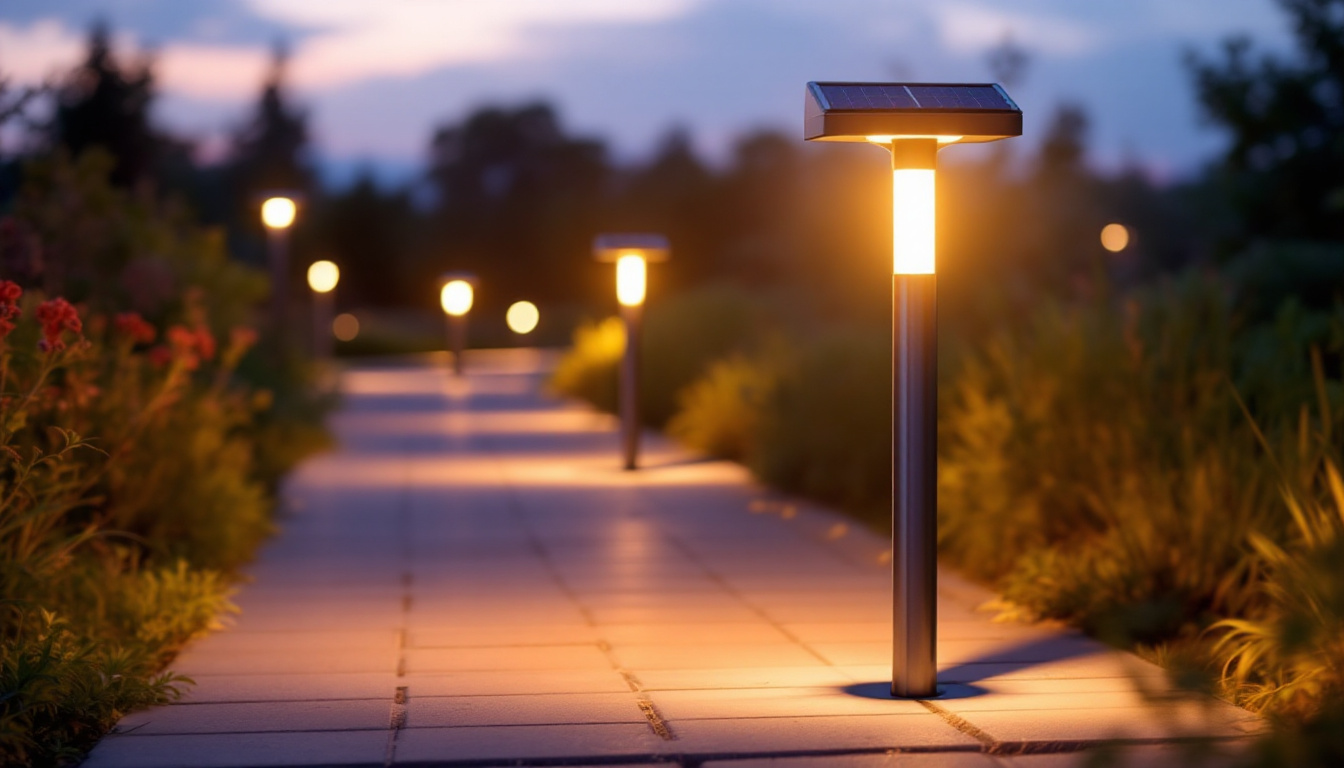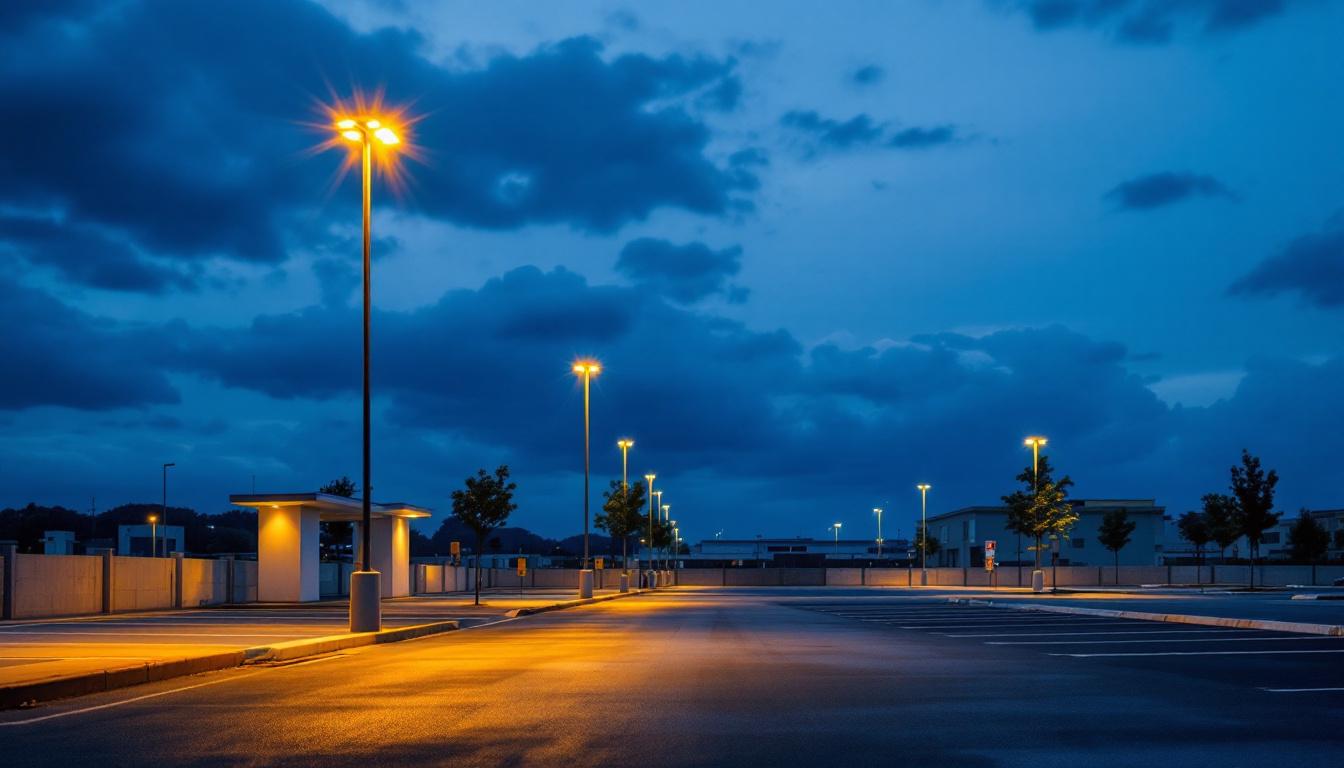
In the realm of outdoor lighting, solar bollard lights have emerged as a popular choice for both residential and commercial applications. These innovative fixtures not only provide illumination but also contribute to energy efficiency and sustainability. For lighting contractors, understanding the science behind solar bollard lights is essential for effective installation and client education. This article delves into the components, functionality, and advantages of solar bollard lights, equipping contractors with the knowledge needed to enhance their service offerings.
Solar bollard lights are standalone fixtures designed to provide illumination in outdoor spaces such as pathways, gardens, and commercial properties. They are powered by solar energy, making them an eco-friendly alternative to traditional lighting solutions. Understanding their basic components is crucial for lighting contractors looking to install these fixtures effectively.
At the heart of every solar bollard light are several key components that work together to harness solar energy and convert it into usable light. These include:
The operation of solar bollard lights is relatively straightforward. During the day, the solar panels absorb sunlight and convert it into electricity. This energy is then stored in the batteries for use after sunset. As night falls, the control circuit activates the LED light source, illuminating the area. Most modern solar bollard lights are equipped with sensors that detect ambient light levels, allowing them to turn on and off automatically.
Additionally, some advanced models feature motion sensors, which can enhance energy efficiency by activating the light only when movement is detected. This technology not only conserves energy but also adds an element of security to outdoor spaces.
Beyond their functional benefits, solar bollard lights come in various designs and finishes, allowing them to complement the aesthetic of any environment. From sleek, modern styles to more traditional looks, these fixtures can enhance the visual appeal of gardens, parks, and commercial properties. Furthermore, many manufacturers offer customizable options, enabling clients to choose colors, heights, and even light intensity, ensuring that the lighting solution meets specific needs and preferences.
Moreover, the installation of solar bollard lights is typically straightforward, as they do not require extensive wiring or electrical work. This ease of installation not only reduces labor costs but also allows for greater flexibility in placement. Whether illuminating a winding garden path or marking the entrance to a business, solar bollard lights can be strategically positioned to create a welcoming and safe atmosphere. As communities increasingly prioritize sustainability, the adoption of solar lighting solutions continues to grow, making solar bollard lights a popular choice for environmentally conscious consumers.
For lighting contractors, understanding the advantages of solar bollard lights can help in making informed recommendations to clients. These benefits extend beyond mere illumination, encompassing sustainability, cost savings, and ease of installation.
One of the most significant advantages of solar bollard lights is their energy efficiency. By relying on solar power, these fixtures reduce dependence on the electrical grid, leading to lower energy costs for clients. This is particularly beneficial for commercial properties, where energy expenses can be substantial. Furthermore, the use of LED technology ensures that the lights consume minimal power while providing maximum brightness.
Solar bollard lights contribute to environmental sustainability by utilizing renewable energy sources. This reduces carbon emissions associated with traditional lighting systems that rely on fossil fuels. For clients who prioritize eco-friendly solutions, solar bollard lights present an attractive option that aligns with their values.
While the initial investment in solar bollard lights may be higher than traditional lighting options, the long-term savings are significant. Since these lights do not require wiring or trenching, installation costs are often lower. Additionally, the absence of electricity bills for lighting can lead to substantial savings over time. For clients looking to minimize operational costs, solar bollard lights are an excellent choice.
For lighting contractors, proper installation is crucial to ensure the optimal performance of solar bollard lights. Several factors must be considered during the installation process to maximize their effectiveness.
Before installation, conducting a thorough site assessment is essential. This involves evaluating the location for adequate sunlight exposure, as solar panels require direct sunlight to function efficiently. Areas shaded by trees or buildings may not provide sufficient energy for the lights to operate effectively. Contractors should also consider the intended use of the space and the desired level of illumination.
The positioning of solar bollard lights plays a vital role in their performance. Ideally, these lights should be placed in areas where they can provide the most benefit, such as along pathways or near entrances. The height at which the lights are installed can also impact their effectiveness; typically, a height of 3 to 4 feet is recommended for optimal illumination.
While solar bollard lights are generally low-maintenance, periodic checks are necessary to ensure they remain in good working condition. Contractors should advise clients on the importance of keeping the solar panels clean and free from debris, as dirt and grime can hinder their ability to absorb sunlight. Additionally, battery replacement may be required every few years, depending on the quality of the batteries used.
The field of solar lighting technology is constantly evolving, leading to improved performance and functionality of solar bollard lights. Staying informed about these advancements can help lighting contractors offer the best solutions to their clients.
Many modern solar bollard lights now come equipped with smart technology, allowing for enhanced control and customization. Features such as remote control operation, programmable settings, and integration with smart home systems provide clients with greater flexibility. Contractors should familiarize themselves with these technologies to offer tailored solutions that meet the specific needs of their clients.
Advancements in battery technology have significantly improved the performance of solar bollard lights. Lithium-ion batteries, for instance, offer higher energy density, longer lifespan, and faster charging capabilities compared to traditional lead-acid batteries. Understanding the differences between battery types can help contractors recommend the best options for their clients.
Recent developments in LED technology have led to brighter and more efficient light output. Many solar bollard lights now feature adjustable brightness settings, allowing users to customize the level of illumination based on their preferences or specific requirements. This flexibility can be a selling point for clients who seek tailored lighting solutions.
Solar bollard lights are versatile fixtures that can be used in a variety of settings. Understanding the different applications can help lighting contractors recommend suitable solutions for their clients.
In residential settings, solar bollard lights are commonly used to illuminate pathways, driveways, and garden areas. They provide a safe and attractive lighting solution that enhances the aesthetic appeal of outdoor spaces. Homeowners appreciate the ease of installation and the lack of ongoing energy costs.
For commercial properties, solar bollard lights are ideal for illuminating parking lots, walkways, and outdoor seating areas. They enhance safety and security while contributing to a sustainable image for businesses. Public spaces such as parks and recreational areas also benefit from solar bollard lights, providing illumination for evening activities and enhancing the overall environment.
Solar bollard lights can also be used for architectural and landscape lighting, highlighting features such as trees, sculptures, and building facades. Their sleek design allows them to blend seamlessly into various environments, providing functional lighting without compromising aesthetics.
While solar bollard lights offer numerous benefits, there are challenges and limitations that lighting contractors should be aware of when recommending these fixtures to clients.
Solar bollard lights rely on sunlight to function, making them dependent on weather conditions. Extended periods of cloudy or rainy weather can reduce their effectiveness, leading to diminished light output. Contractors should educate clients about this limitation and discuss potential solutions, such as supplementary lighting options for particularly gloomy seasons.
Although solar bollard lights can lead to long-term savings, the initial investment may be higher than traditional lighting options. Clients may be hesitant to invest upfront, so contractors should emphasize the long-term benefits and potential savings to help justify the cost.
The performance of solar bollard lights can vary based on factors such as geographic location, seasonal changes, and the quality of the components used. Contractors should ensure they are recommending high-quality products and provide clients with realistic expectations regarding performance.
Solar bollard lights represent a significant advancement in outdoor lighting technology, offering lighting contractors a sustainable and cost-effective solution for their clients. By understanding the science behind these fixtures, including their components, advantages, and installation considerations, contractors can confidently recommend solar bollard lights for various applications.
As technology continues to evolve, staying informed about advancements in solar lighting will enable contractors to provide the best solutions tailored to their clients’ needs. Embracing solar bollard lights not only enhances outdoor spaces but also contributes to a greener, more sustainable future.
Ready to elevate your lighting solutions with the sustainable efficiency of solar bollard lights? LumenWholesale is here to support your endeavors with premium, spec-grade lighting products at unbeatable wholesale prices. Say goodbye to local distributor markups and hello to a vast selection of industry-standard lighting that promises reliability and high performance for every project. With free shipping on bulk orders, LumenWholesale ensures you receive the best value without hidden fees. Make the smart choice for quality, affordability, and convenience. Visit us now at Wholesale Lighting at the Best Value and light up your projects with confidence.

Discover essential tips and strategies to sidestep expensive errors in lighting projects.

Unlock the secrets of four-way switches with our comprehensive guide tailored for lighting contractors.

Discover the importance of outdoor parking lot lighting fixtures in enhancing safety, visibility, and energy efficiency.

Discover expert tips and insights on installing hanging light fixtures with chains, tailored specifically for lighting contractors.